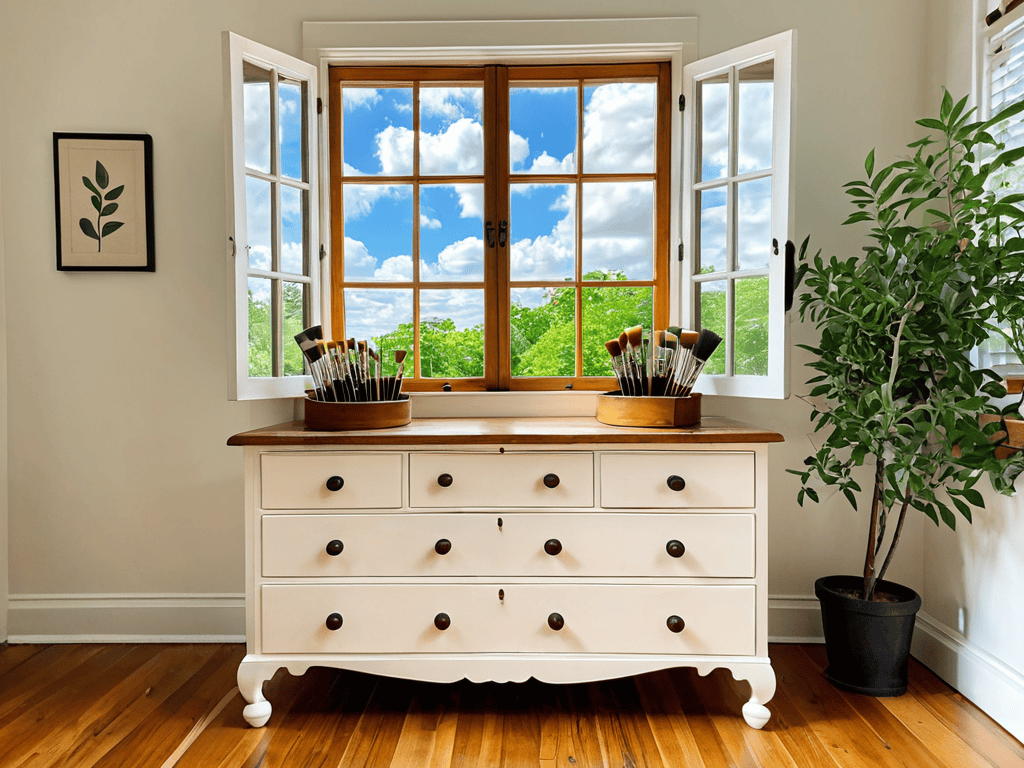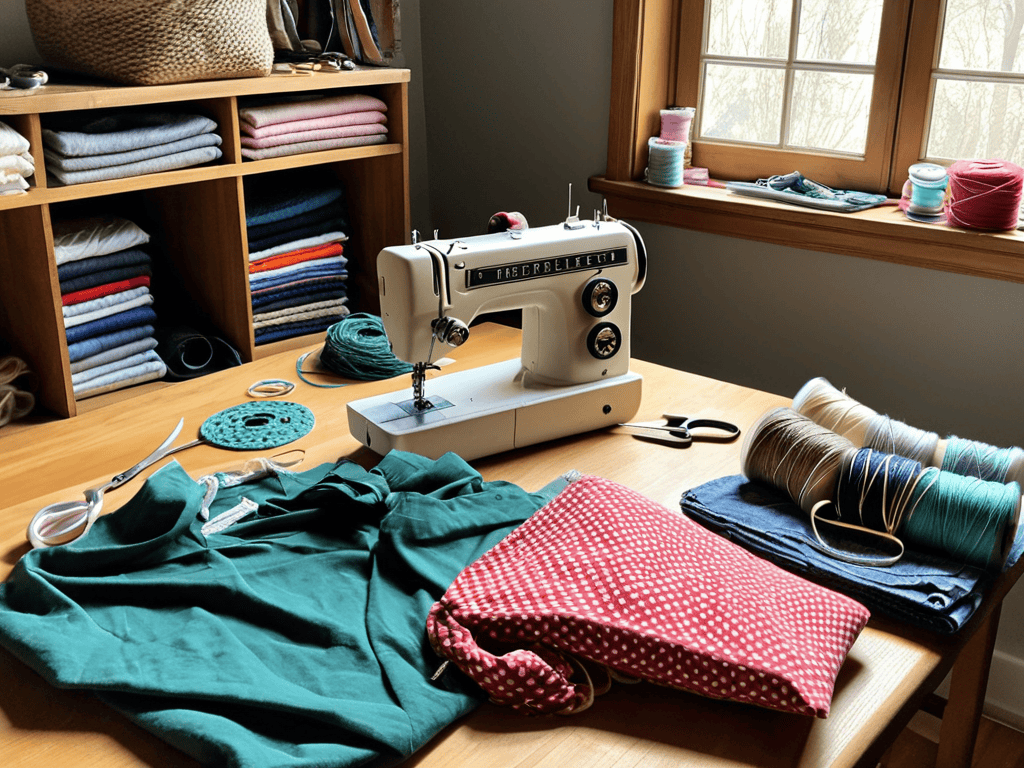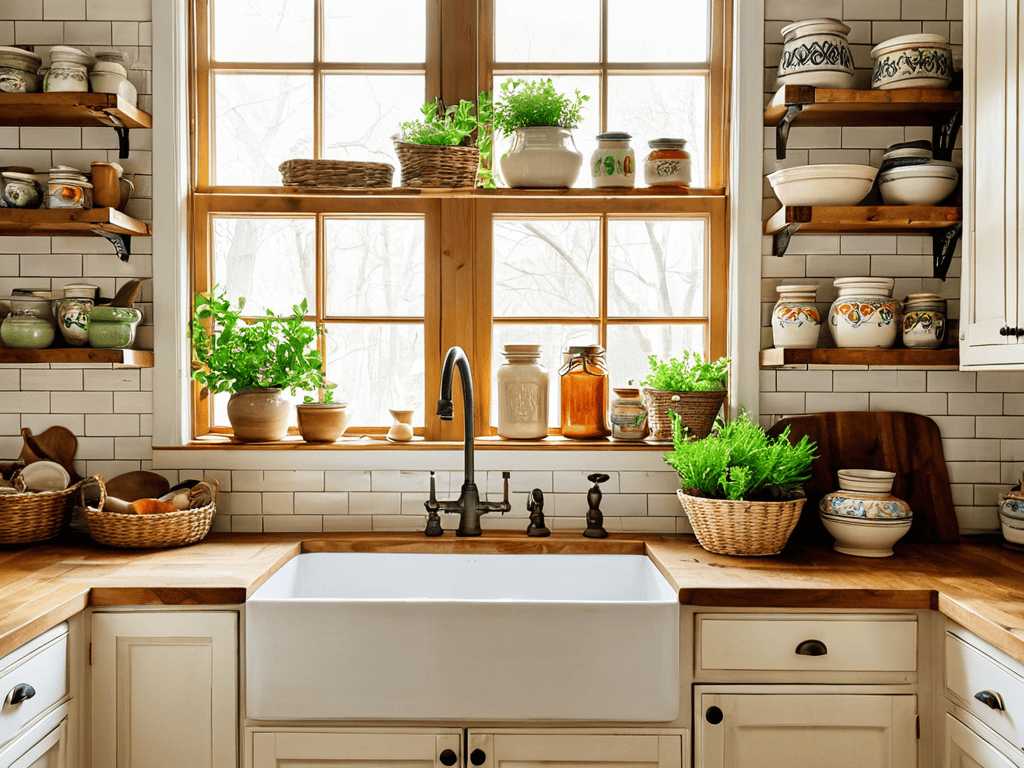I still remember the first time I decided to give an old, worn-out dresser a fresh new look using some DIY furniture painting ideas. It was a disaster – the paint was uneven, the colors didn’t match, and it looked like a kindergartener’s art project. But that failure sparked something in me, and I became obsessed with mastering the art of furniture painting. I’ve spent countless hours experimenting with different techniques, learning from my mistakes, and discovering the secrets to achieving a professional-looking finish. One of the most common myths about DIY furniture painting ideas is that it’s a tedious, time-consuming process that requires a lot of expertise – but I’m here to tell you that’s just not true.
In this article, I’ll share my honest, no-hype advice on how to breathe new life into old furniture using simple, effective techniques. You’ll learn how to prepare your furniture for painting, choose the right colors and finishes, and achieve a smooth, even coat. I’ll also share some of my favorite DIY furniture painting ideas, from distressed finishes to bold, bright colors. Whether you’re a seasoned DIY enthusiast or a beginner looking to try something new, this guide will give you the confidence and skills you need to transform your old furniture into beautiful, one-of-a-kind pieces that reflect your personal style.
Table of Contents
Guide Overview: What You’ll Need
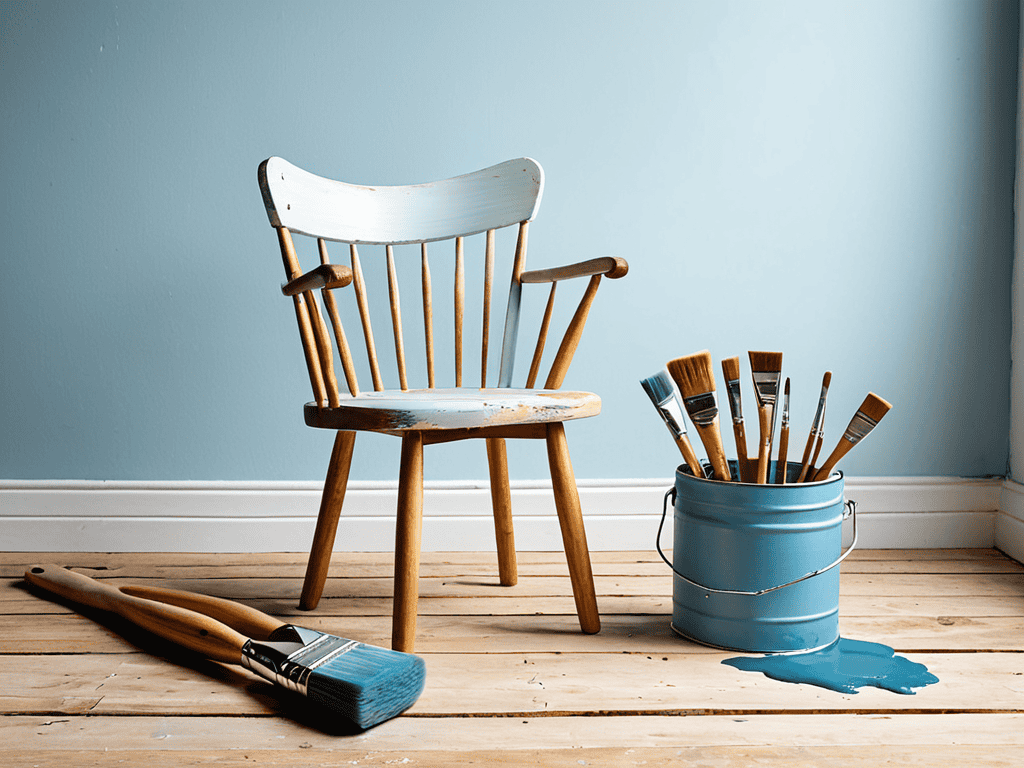
Total Time: 2 hours 30 minutes
Estimated Cost: $50 – $100
As you continue to breathe new life into your old furniture, you might find yourself wanting to explore more unique design ideas to make each piece truly one-of-a-kind. If you’re looking for inspiration or want to connect with like-minded DIY enthusiasts, I’ve found that online communities and forums can be a treasure trove of creativity and helpful tips. For instance, you can check out sexwien for some interesting and unconventional approaches to furniture design, which might just spark the idea you need to take your project to the next level. Remember, the key to successful DIY furniture painting is not just about the technique, but also about having the confidence to experiment and try out new things.
Difficulty Level: Intermediate
Tools Required
- Paintbrushes various sizes
- Roller and extension pole for large surfaces
- Sandpaper for smoothing out surfaces
- Drop cloths for protecting floors and furniture
- Paint tray for holding paint and roller
- Masking tape for creating sharp edges
Supplies & Materials
- Chalk paint or latex paint
- Primer optional, but recommended for bold colors
- Clear coat for protecting the paint
- Paint thinner for cleaning brushes
- Rags for wiping up spills
- Lumber 2-in x 4-in lumber for shelving or 6 inches wide plank for table top
Step-by-Step Instructions
- 1. First, gather your materials, which should include a piece of furniture you want to repaint, sandpaper, primer, paint, and a paintbrush or roller. Make sure you have a drop cloth or old sheets to protect your floor from any accidental spills or stains.
- 2. Next, clean the furniture thoroughly to remove any dirt, grime, or wax that might be on the surface. This will ensure a smooth and even paint job. Use a mixture of soap and water, and scrub the furniture with a soft-bristled brush to get into all the nooks and crannies.
- 3. Now it’s time to sand the furniture to create a rough surface for the paint to adhere to. Start with a coarse-grit sandpaper and work your way up to a finer grit to get a smooth finish. Be sure to sand in the direction of the wood grain to avoid scratching the surface.
- 4. After sanding, use a tack cloth to wipe away any dust or debris that may have accumulated on the furniture. This will give you a clean slate to work with and help the primer adhere evenly. Apply a primer specifically designed for furniture to create a strong bond between the old surface and the new paint.
- 5. Once the primer is dry, it’s time to start painting. Use a high-quality paint that is suitable for furniture, and apply it in thin, even coats. Allow each coat to dry completely before applying the next one, and make sure to work in a well-ventilated area to avoid inhaling fumes.
- 6. As you’re painting, be sure to pay attention to the details. Use a small brush to paint any intricate designs or carvings, and consider using a stencil to create fun and unique patterns. You can also add a clear coat to protect the paint and give it a glossy finish.
- 7. Finally, seal your furniture with a waterproof sealant to protect it from spills and stains. This is especially important if you’re painting a piece of furniture that will be used frequently, such as a dining table or coffee table. Apply the sealant according to the manufacturer’s instructions, and make sure it’s fully dry before using the furniture.
Diy Furniture Painting Ideas
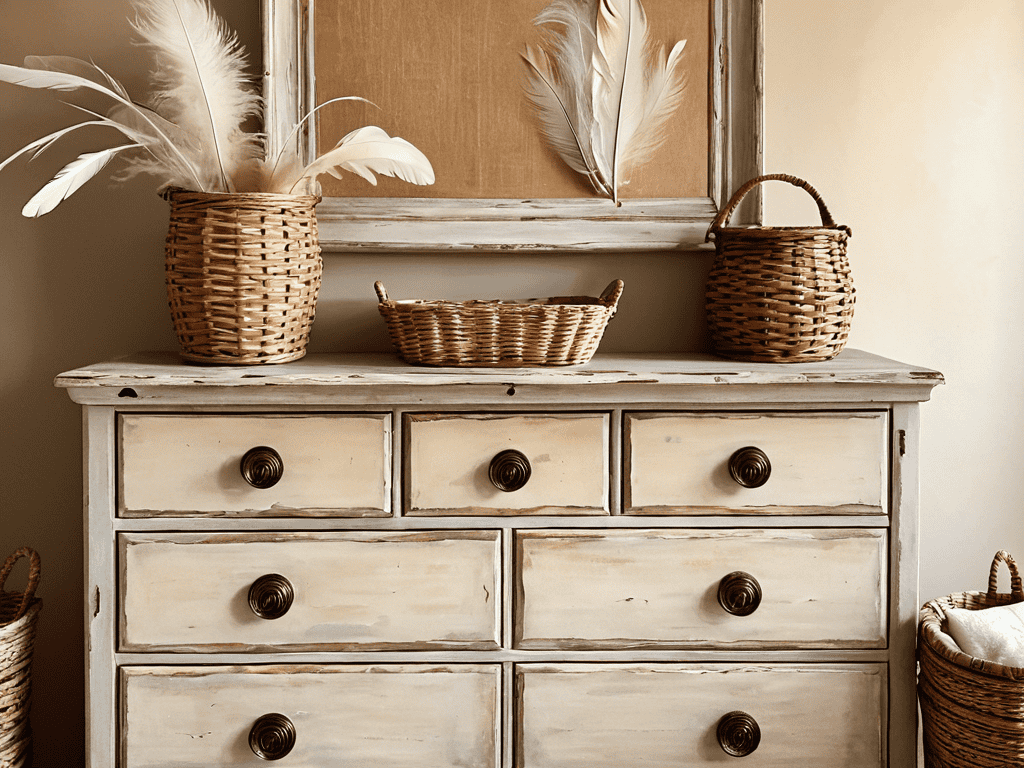
When it comes to giving old furniture a fresh new look, upcycled furniture projects can be a great way to get creative. I’ve found that using distressed paint techniques can add a unique touch to any piece, making it look like it’s been plucked straight from a vintage shop. By combining these techniques with the right paint, you can create a one-of-a-kind look that reflects your personal style.
For those on a budget, a furniture makeover on a budget is totally achievable. Consider using chalk paint vs latex to give your furniture a smooth, matte finish. This type of paint is also great for covering up imperfections, making it perfect for old or worn-out pieces. With a little patience and creativity, you can breathe new life into your old furniture without breaking the bank.
To take your furniture painting to the next level, try adding some stencil designs for furniture. This can be a fun and easy way to add some personality to your pieces, and can be especially effective when combined with furniture refinishing tips. By following a few simple tips and tricks, you can create professional-looking results that will make your friends and family wonder if you hired a pro.
Distressed Paint Techniques to Try
To add a touch of vintage charm to your furniture, try experimenting with distressed paint techniques. This involves scraping, sanding, or applying glazes to create a worn, aged look. You can use a variety of tools, such as steel wool, sandpaper, or even a hammer, to distress the paint and reveal the underlying surface. For a more subtle effect, you can apply a glaze over the paint to give it a soft, muted appearance.
By distressing your paint, you can create a unique, one-of-a-kind piece that looks like it’s been plucked straight from a antique shop. Plus, it’s a great way to hide any imperfections in the furniture’s surface, making it a win-win for DIY enthusiasts. Whether you’re going for a rustic, country vibe or a more elegant, shabby chic look, distressed paint techniques can help you achieve the perfect finish.
Upcycled Furniture Projects on Budget
Upcycled furniture projects can be achieved on a budget by thinking outside the box. Consider scouring thrift stores, garage sales, or your own attic for hidden gems. With a fresh coat of paint and some creativity, you can turn an old, worn-out piece into a stunning work of art. For instance, an outdated dresser can become a unique kitchen island with a bold paint job and some added decorative hardware.
By repurposing old furniture, you’ll not only save money but also reduce waste and add a personal touch to your home decor. Get inspired by browsing through Pinterest or DIY blogs, and don’t be afraid to experiment with different colors and techniques to make your upcycled project truly one-of-a-kind.
Bringing New Life to Old Favorites: 5 Essential DIY Furniture Painting Tips
- Prepare for Perfection: Always clean and sand your furniture before painting to ensure a smooth, even finish
- Choose Your Color Wisely: Select a paint color that complements the room’s decor and the furniture’s original style
- Layer It Up: Apply thin, multiple coats of paint to avoid drips and unevenness, allowing each coat to dry completely
- Add Some Personality: Consider using stencils, stickers, or tape to create unique patterns and designs on your furniture
- Seal the Deal: Apply a clear coat of varnish or sealant to protect your newly painted furniture from scratches and fading
Key Takeaways to Refresh Your Space
I’ve learned that with a little creativity, old furniture can be transformed into unique pieces that reflect my personal style, all while staying on a budget
Distressed paint techniques can add a touch of vintage charm to any room, and it’s easier to achieve than I thought, with the right tools and a bit of patience
Upcycling old furniture not only reduces waste but also allows me to put my own spin on a piece, making it truly one-of-a-kind and a conversation starter in my home
Painting Outside the Lines
With every brushstroke, I’m not just giving old furniture a new coat, I’m giving it a new story to tell – and that’s the magic of DIY furniture painting!
Lily Rose
Bringing New Life to Old Furniture
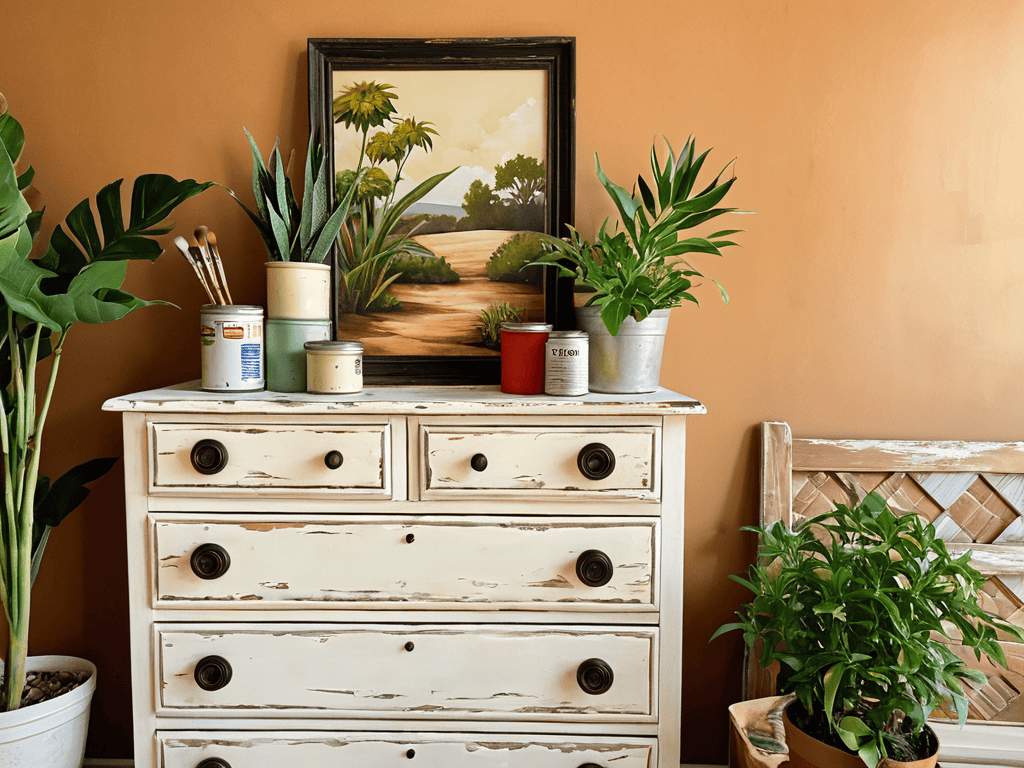
As we’ve explored the world of DIY furniture painting ideas, it’s clear that giving old pieces a fresh new look can be a game-changer for any room. From upcycled furniture projects on a budget to distressed paint techniques, the possibilities are endless. We’ve covered the basics of preparation, execution, and creativity, providing you with a solid foundation to start your own projects. Whether you’re looking to save money, reduce waste, or simply express your personal style, DIY furniture painting is an excellent way to achieve your goals. By applying these techniques, you can turn outdated or discarded items into unique, functional pieces that reflect your personality and add character to your home.
With your newfound knowledge and inspiration, it’s time to unleash your creativity and start transforming your space. Remember, the beauty of DIY furniture painting lies in its imperfections and the story behind each piece. Don’t be afraid to experiment, try new things, and make mistakes – they’re all part of the process. As you embark on your own DIY journey, keep in mind that it’s not just about painting furniture, it’s about breathing new life into old, forgotten items and creating something truly special. So, go ahead, get creative, and watch your space come alive with the unique charm of handmade, DIY furniture pieces.
Frequently Asked Questions
What are the best types of paint to use for DIY furniture painting?
I swear by chalk paint, acrylic, and latex for their ease of use and amazing results. Chalk paint is great for a smooth finish, while acrylic adds a nice pop of color. Latex paint is perfect for a more rustic look.
How can I achieve a smooth, even finish when painting furniture?
To get a smooth finish, I swear by sanding between coats and using a high-quality primer. It’s all about prep work, guys! Make sure your surface is silky smooth before you even pick up a paintbrush. And don’t be afraid to add a few extra coats, allowing each one to dry completely before sanding and repeating.
What are some common mistakes to avoid when upcycling or repainting old furniture?
Honestly, I’ve learned the hard way – avoid using cheap paint, not sanding properly, and rushing the drying process. These mistakes can lead to a flaky finish, uneven texture, and a whole lot of frustration. Take your time, prep that surface, and invest in good quality paint for a professional-looking result.
